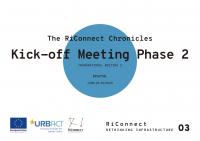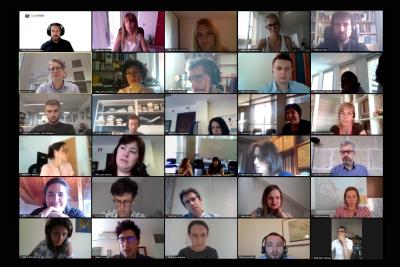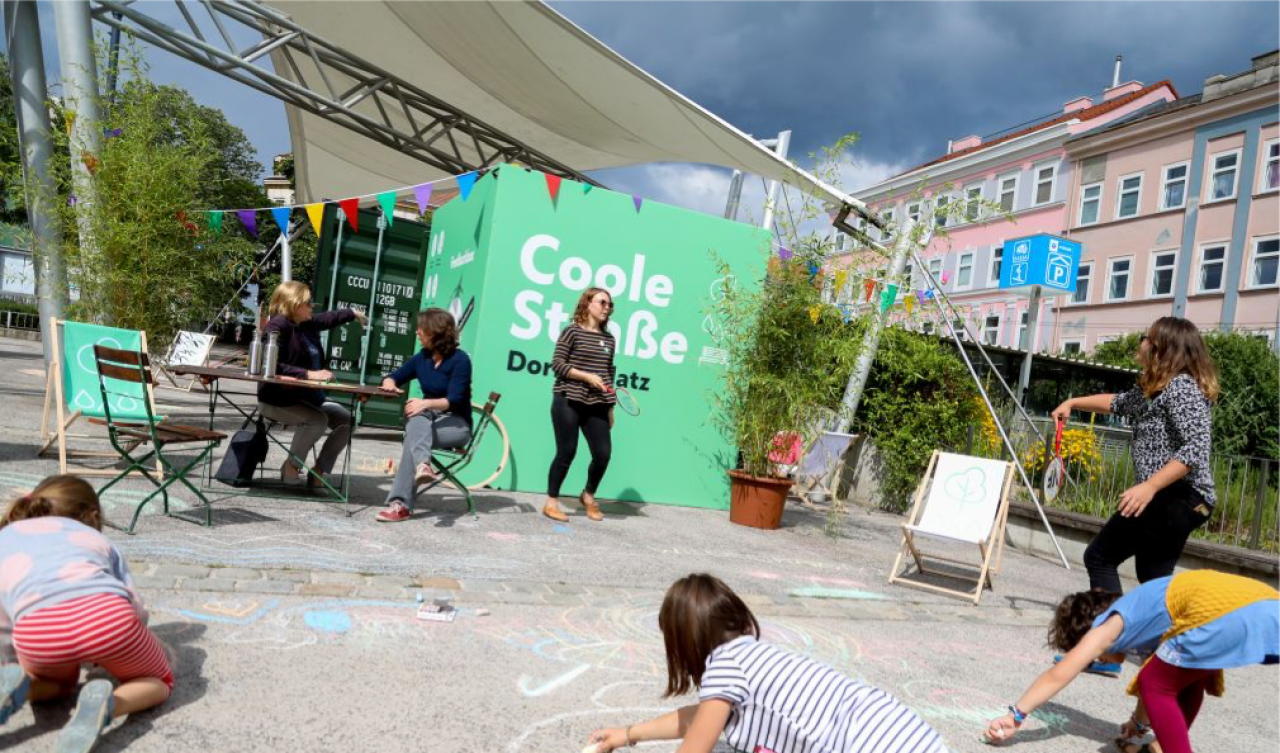
RiConnect Lead Expert Roland Krebs reflects on the impact of the pandemic in mobility and the use of public space. The aftermath of COVID-related lockdowns has accelerated changes in the urban realm: offering temporary public spaces and advancing towards innovative models. Through examples in Vienna, the article shows how change is possible to offer spaces for all.
The value of public space for people was much more visible over the multiple lockdowns we witnessed in 2020 and 2021 than it had been for decades before: with restrictions to move outside such as closed parks and other recreational options, the importance to provide public space for people to move outside their homes was imminent, specifically for denser urban areas where people do not have any outside parts attached to their living spaces – be it a balcony, terrasses or a piece of green space.
During our first virtual Transnational Meeting of Phase 2 held on June 29 and 30, 2020 of the RiConnect Action Planning Network (APN), we discussed how cities across Europe temporarily turned road space into shared spaces giving priority space to pedestrians and cyclists over the crisis. Due to the COVID-19 situation in Spring 2020 and its implication to our lifestyle in metropolitan areas, we are living in quite challenging times of uncertainty and complexity regarding our planning decisions. Cities where immediately responding by expanding public spaces for pedestrians and cyclists. For most of the cities it was a shift in mobility behaviour and it turned out that the “city-at-eye-level” and “15-min-city” approaches are more important than ever: Avoid commuting and have everything in close proximity could be potential local solutions for future development of our cities: proximity, closeness and businesses around the corner reachable with short walking distance proof to be interesting concepts especially in metropolitan areas that we might want to follow through RiConnect.
To keep the required physical distance of one meter even in dense urban areas and reduce the risk of spreading the virus, in May 2020 the City of Vienna declared 15 streets, located in different districts to be temporary shared spaces for use by pedestrians, bicycles, and cars with speeds limited to 20 km/h. Criteria for selecting the streets varied but among them were narrow sidewalks, dense neighborhood population, and few parks and green spaces at a walkable distance; another 20 streets have been opened entirely to pedestrians. The main goal was to give citizens more space to go outside without risking an infection. However, those projects were not only ad-hoc decisions by the city government during the pandemic, the city since 2018 is constantly implementing strategies to create a better walkable city and –at the same time- combat urban heat-islands and adapt to climate change.
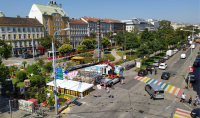
Figure 1: The Gürtel-Pool in Vienna – a controversial placemaking project in Vienna. Source: City of Vienna
During the virtual Transnational Meeting, I conducted a virtual bike-ride and site visit in Leopoldstadt in Vienna. Leopoldstadt is the second district in Vienna, close to the historic city centre. The district has an extension of about 19 km2 and has a population of around 105.000 inhabitants. During the COVID-19 crisis the district together with the city government introduced a quite significant number of measures to create more space for people in one of the densest and culturally diverse areas of Vienna. The virtual site visit was conducted “live” via zoom, accompanied with inputs through presentations and a “soundtrack” provided during the 3-4 min commutes between the stops. Some stops were accompanied with pre-organized on-site meetings with experts. The virtual site visit in Vienna served as a pilot to break the ice for other virtual site visits for the following Transnational Meetings to be conducted by our URBACT partners in the eight metropolitan areas.
I would like to highlight some projects that shaped Vienna during the pandemic in 2020:
- To keep the required physical distance of one meter even in dense urban areas and reduce the risk of spreading the virus, the City of Vienna declared about 15 streets, located in different districts, to be temporary shared-spaces for use by pedestrians, bicycles, and cars with speeds limited to 20km/h. Criteria for selecting the streets varied but among them were narrow sidewalks, dense neighborhood population, and few parks and green spaces at a walkable distance; another 20 streets where cars were already banned have been opened to pedestrians. The intent is to give citizens more space to go outside without risking infection. Many other cities are moving to give their citizens more recreation space. New York City closed 64 km streets to cars in May 2020 and planned to close a total of 160 if the crisis continues.
- The Donaukanal (Danube channel) is one of the most important recreational areas in the heart of the city. Until 15 years ago, the public space was neglected and was perceived as disturbing and unsecure place, with drug abuse just as one of the issues. At the start of the transformation into a more active public space in 2005 restaurants were created with a placemaking agenda of cultural activities and festivals supported by bars and leisure zones. In 2010 guidelines were drafted to specify general urban rules for its further development of the Donaukanal, which is activated by short-term contracts for certain commercial and non-commercial areas commissioned to bars, artists, and entrepreneurs. One criterion was the quality of the architecture of the temporary structures. During the pandemic the Donaukanal remained one of few open public places for all.
- In the 2nd district of Vienna, the Trunnerstraße has been recently converted into the Else Feldmann Park: Several existing green pockets were unified and connected to form a total of 3,400 m2 of open space. A 50-meter-long wall was torn down in April 2020, instead of the sealed road-space, a new park was created, which has been open since the beginning of october 2020. Numerous residents took part in the planning process from autumn 2018. During participatory discussion-sessions in several stages of the design, residents as well as institutions and associations made numerous suggestions that were incorporated into the design. The street-to-park conversion was planned to be implemented before the pandemic; however, its construction was accelerated and came in the right moment during the crisis.
- Another project that the city of Vienna implemented was a temporary “Gürtelpool” on one of Vienna’s ring roads. During the pandemic summer of 2020, this controversial project was implemented with a swimming pool, green areas with sunbeds, a kiosk, a stage for events and a bus in which you could stay overnight. Located in one of the most densely populated districts around the Westbahnhof with around 15.000 inhabitants per km2 and hardly any available green spaces, the project provided temporality public place that could be used in the summertime. However, until the 1950s, the area already had a permanent public pool at the same location that has vanished due to the demanding increasing space-requirements of the inner-city highway.
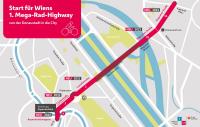
Figure 2: a new permanent bike highway for Vienna as a result of the pop-up bikelanes. Source: City of Vienna
In times of the pandemic, we learned how much people require accessible public spaces in dense, urban areas. The short-term measures were intended to give people more space and adapt public space to physical distancing restrictions, responding to many challenges generated by the current health crisis. Also, the crisis showed how flexible public administrations like the one in Vienna can be: tactical urbanism interventions were quickly designed and implemented. Those kinds of interventions were implemented in many cities in Europe. Some short-term measures were made to be permanent because it was the right moment to do so. It is great to see car-free streets and similar measures of converting cars-streets into thriving, active public spaces popping-up. During the first virtual RiConnect Transnational Meeting in June 2020 we agreed that the active and leading role of the public sector in times of crisis now should continue to prepare and adapt our cities for climate change, getting ready for a sustainable, greener urban future with more public space for everybody.
Roland Krebs is the Lead Expert of the RiConnect network. He is an Urban planner and urbanist, and director of Superwien urbanism, where he develops strategic action plans for cities to tackle urban growth. He has a vast, international experience in urban planning, design and development, real estate development, land use planning and regional planning.
Cover image: placemaking projects in Vienna during the pandemic. Source: City of Vienna


